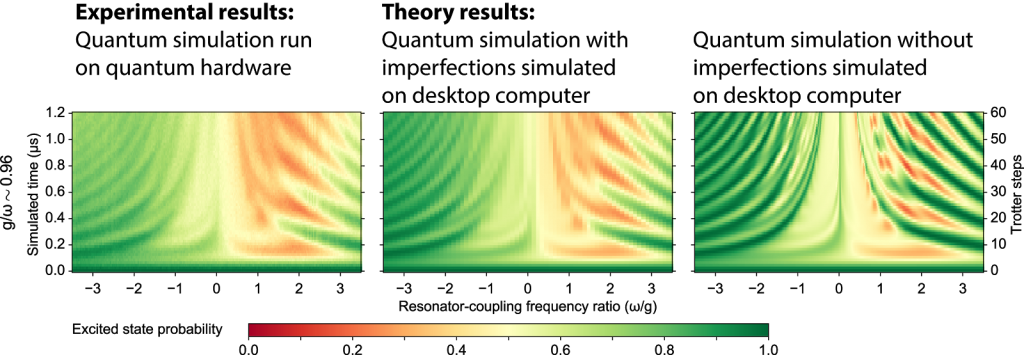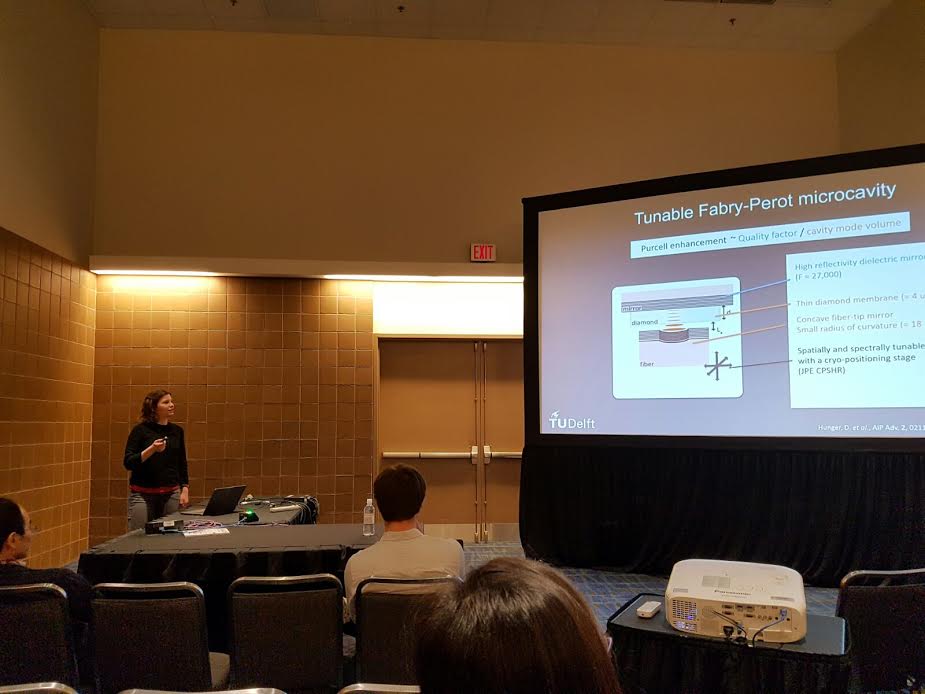21.05.2017difficulty level - QQ
Who simulates a quantum simulation?
by Christian Dickel
Elon Musk puts the odds of us living in a “base reality” at one in a billions. His more likely alternative: we live in a simulation running on a computer. After the Matrix movie and in the age of computer games, this might not be an absurd idea to many people anymore. I will not focus on the merits of the simulation hypothesis here. However, as a quantum scientist, I am convinced that if we were living in a simulation it would have to be a quantum one. Here, I want to explain why that is and I’d like to share some of my recent experience with quantum simulations – maybe the most interesting-looking application for future quantum computers at this point. In the process of the quantum simulation we also simulated the simulation – a concept that is kind of hinted at in Musk’s phrase “base reality”. From the base reality there could be a whole ladder of simulations within simulations all the way down – except for the problem of diminishing computer power. To answer the question in the title, in our research group my colleagues Marios and Nathan recently simulated a quantum simulation before running it on a small scale quantum processor.
Why we simulate things on computers
Simulations are imitations of something with something else. The simplest example are scaled models in architecture or in aerodynamic tests. But here we are going to focus on computer simulations. When do we use computer simulations? Right around the beginning of the computing age, computer simulations were used to design the atomic bomb, because static and deterministic equations were not sufficient to get the job done. Simulations come in when experiments are costly or even impossible. They can give insight into emergent behavior of a system or just allow engineers to explore parameter space.
Some basic understanding of the system to be simulated is required in order to build a model, this model then stands in for the real thing. In the computer simulation context, a model is a piece of mathematics that imitates the behavior of the system. We will attempt the simulation only if we have confidence in our model and model is not so simple that we can immediately see through the systems behavior.
It’s quantum all the way down
Models can describe systems starting from different levels. One can model a human with a dummy for the purpose of crash tests, or one can build a computer model starting on a cellular level or even on the level of the molecules or atoms that the cells are made of. At the lowest level, quantum mechanics is needed to describe the dynamics of any given system. That’s why quantum scientists got interested in simulations.
It was soon found that quantum physics cannot be efficiently simulated on a normal computer, because the complexity of simulations grows exponentially with system size – think number of atoms. Even supercomputers will not be able to fully simulate quantum systems with 100 degrees of freedom – probably not even the supercomputers of 50 years from now. That’s why I claimed above that if we were living in a simulation it would have to be a quantum one; the physical laws of our world could not be simulated on classical computers.

However, we need to solve quantum problems in chemistry or material science all the time: In the calculation of molecular ground states, the development of catalysts and drugs or in engineering quantum materials. Currently we are doing costly experiments which we would like to replace by more adaptable and cheaper simulations. While the prospect excites me, I also hope that I can live out my days doing “real” science in the lab; computer programming alone does not excite me.
Our quantum simulation
Back to my colleagues Marios and Nathan and the simulated simulation: As I said, quantum systems cannot easily be simulated on our computers, but quantum computers can do the trick. It comes down to imitating the behavior of one quantum system with another quantum system. A quantum computer is like a classical computer in the sense that it stores and processes information. The difference is that instead of bits it uses quantum bits that exhibit the strange features of quantum mechanics. Contrary to the exponential cost of modelling quantum systems with classical ones, this scales linearly with system size: a quantum system with 100 degrees of freedom requires 100 quantum bits to simulate. A universal quantum computer could then simulate any quantum system.
We just wanted to implement the Rabi Model, a toy model of the interaction of light with a single atom, in order to reach a regime natural atoms do not: ultra-strong coupling. In this regime, the energy to create photons – particles of light or to excite the atom is less than the energy stored in the light-atom coupling. Light and atom can then not be described as separate entities anymore and the ground state of the system has non-zero photon population. Our model system was a superconducting electrical circuit. Part of the circuit formed the atom and another was storing the photons.
Simulating the simulation
We needed to get the right circuit parameters in order to run the simulation successfully. Beyond the purely theoretical mapping of one system onto another, there are additional constraints:: the timing of our control pulses and the lifetimes of our quantum system. Finding the optimum way to run our simulation was not a trivial task. Therefore Marios had to simulate the simulation as a part of his master’s thesis. Only when he found that we could reach our goal did Nathan go to a clean room, similar to the ones used to make your usual computer chips, to produce a superconducting computer chip. We then cooled this chip down close to the absolute zero of the temperature scale and used a few hundred thousand euros worth of equipment to perform the experiment. In view of this effort, it really made sense to first do a cheap simulation on an ordinary desktop computer.

The simulated simulation also turned out to be invaluable for understanding how different experimental imperfections impacted the real quantum simulation. Unfortunately a simulation of the ideal system is easier than one that has to model all kinds of imperfections. Still, it could be done and in the end we found good agreement with experiment. If you got more interested in this specific experiment, our results can be found here.
Now you might ask: Why could we simulate things when I was claiming that quantum systems are very hard to simulate? This particular experiment was simple enough for classical computers to keep up. Current experiments are proof-of-principle demonstrations. Quantum computing is at this point largely academic and there are only small-scale computer prototypes. Follow up experiments will reach regimes where classical simulations cannot follow, but no one would trust their predictions, yet. They need to go through a testing phase where parts that can be simulated are tested against simulations on normal computers. Only once we are confident that quantum computers behave as they should, will we start using them to simulate something unknown.
The simulation hypothesis
So do we live in a quantum simulation? None of our quantum simulations at the current point are sophisticated enough to sustain a conscious being like Elon Musk. In fact, the simulation hypothesis sounds very deep at first, but doesn’t have a lot of scientific merit. A nice rant about this by Sabine Hossenfelder can be found on the backreaction blog. There is some academic speculation on a possible link between quantum mechanics and consciousness, but no concrete evidence. Here, I just wanted to tell the story of how we often reach the second rung on the simulation ladder, where one simulation is existing within another in the quest for the quantum computer. We probably won’t go into up the ladder though, it is just a part of the debugging process. In the next decade we will likely see the first quantum simulation where normal computers cannot follow.
About Christian Dickel

Christian Dickel
Chris came to the Netherlands for the food and the weather but stayed for the quantum computer work. Apart from work he enjoys playing music with friends, ranting and soap-boxing.
